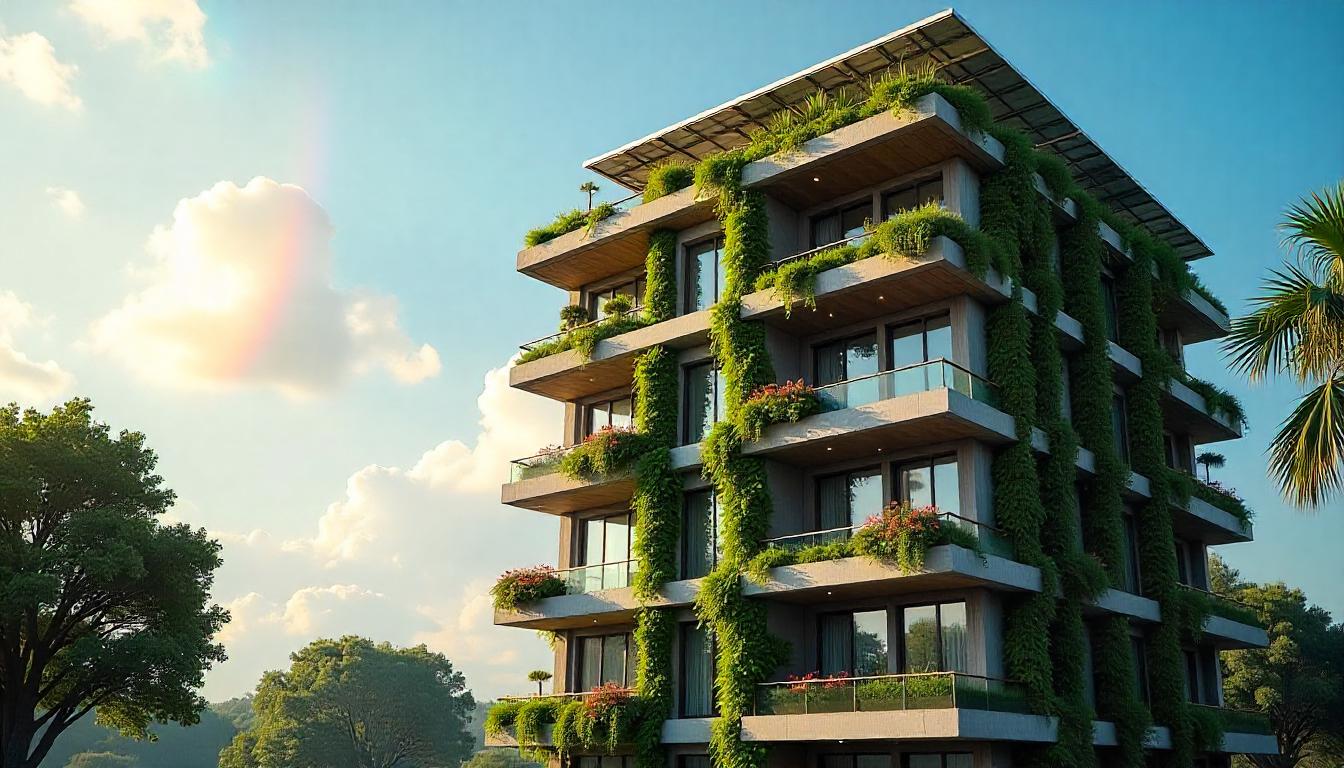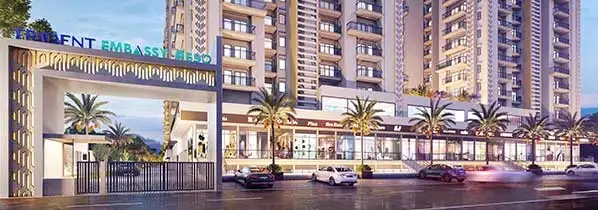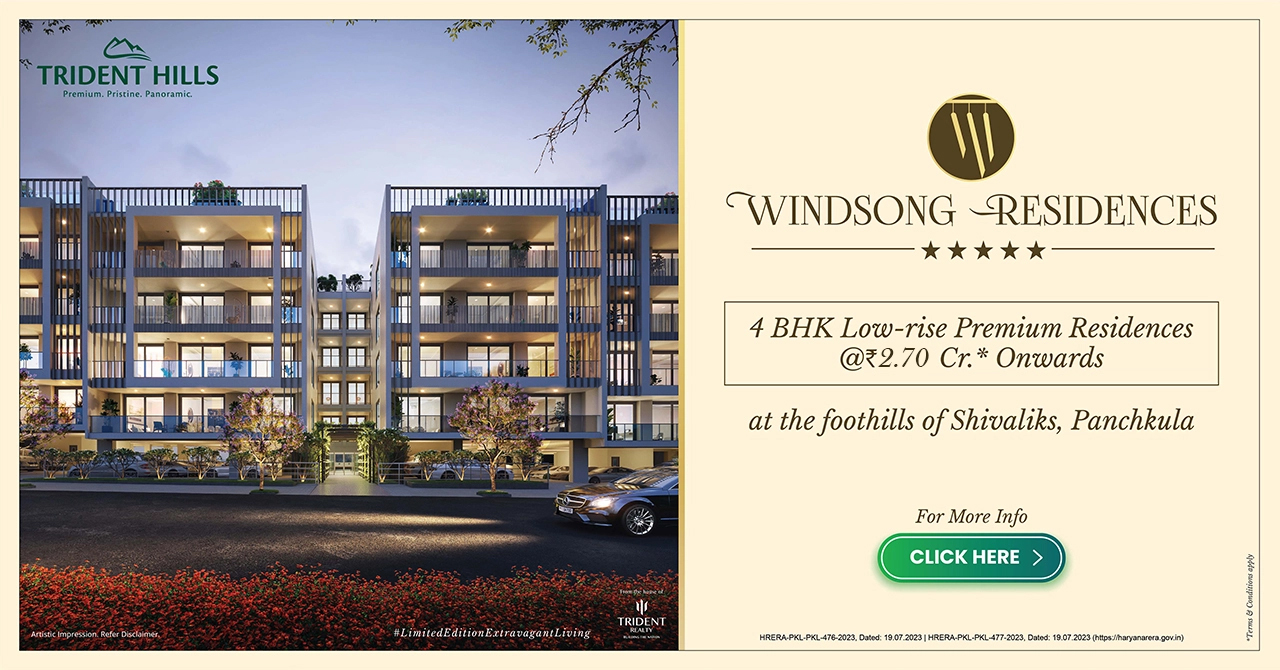
Green Buildings Go Mainstream: Sustainability as a Value Driver in India’s Housing Markets
India’s urban landscape is at a crossroads. Buildings account for nearly 40% of global carbon emissions, and in a rapidly urbanising nation like India, the construction sector’s environmental footprint is a pressing concern. Yet, amidst this challenge lies a transformative opportunity.
What was once considered a niche offering for the eco-aware elite has now become a defining benchmark across residential and commercial projects. Today, green buildings are not just an aesthetic or environmental choice; they are an economic and lifestyle imperative. From energy savings and investor returns to liveability and wellness, green-certified buildings are making a robust case across metros and emerging towns alike. Here’s how.
What Makes a Building “Green”?
A green building minimises its environmental impact through design, construction, and operation, prioritising energy efficiency, water conservation, and occupant well-being. Certifications such as IGBC (Indian Green Building Council), LEED India (Leadership in Energy and Environmental Design), and GRIHA (Green Rating for Integrated Habitat Assessment) establish rigorous standards to ensure these outcomes.
IGBC, launched by the Confederation of Indian Industry (CII), tailors guidelines to India’s climate and building typologies, covering homes, factories, townships, and more. It evaluates sustainable site development, water savings, energy efficiency, materials, and indoor environmental quality.
LEED India, administered by the Green Business Certification Inc. (GBCI), focuses on global benchmarks for energy and carbon reduction, appealing to multinational corporations and premium developers.
GRIHA, developed by The Energy and Resources Institute (TERI) with government support, emphasises India-specific sustainability, integrating local materials and climate-resilient designs.
These certifications ensure buildings use 20–50% less energy, 30–50% less water, and eco-friendly materials, while improving air quality and thermal comfort. For instance, the CII-Sohrabji Godrej Green Business Centre in Hyderabad, the world’s first LEED Platinum building outside the US, recycles all waste and consumes 40% less energy than conventional structures.
From Niche to Norm: Why Green Homes Are Gaining Popularity
The demand for sustainable housing has surged since the COVID-19 pandemic, driven by heightened awareness of health, wellness, and environmental concerns. The pandemic reshaped homebuyer priorities, with clean air, natural light, and lower utility costs rising to the top of the list. According to a CBRE India report, green real estate assets across six major cities—NCR, Mumbai, Pune, Hyderabad, Bengaluru, and Chennai—grew by 24% of the total in 2011 to 31% in 2021, with certified inventory growing at ~10.7% CAGR and a 37% supply increase in the past five years.
Millennials, who will form over 60% of the global workforce by 2030, are leading this charge. A 2023 Statista survey found that 75% of millennials globally are willing to pay a premium for sustainable brands, a trend also reflected in India’s real estate choices [Statista, 2023]. High-net-worth individuals (HNIs) and non-resident Indians (NRIs) also favour green-certified properties, as noted in the Knight Frank Wealth Report 2023, which highlights sustainability as a key investment criterion for wealth preservation.
In cities like Bengaluru and Hyderabad, IT firms and co-working operators increasingly lease IGBC- or LEED-rated spaces, driven by corporate ESG (Environmental, Social, Governance) mandates. This shift is not just urban—tier-2 cities like Jaipur and Coimbatore are witnessing similar demand, as buyers seek homes that align with aspirational, eco-conscious lifestyles.
The Value Proposition of Green-Certified Real Estate
Green buildings aren’t just good for the planet—they’re a smart financial bet. According to the IGBC, certified homes can achieve energy savings of 30–50% and water savings of up to 50%, resulting in significantly reduced operational costs. A JLL India study found that green-certified office properties in top metropolitan areas command 11% higher rents and 21% higher sales premiums than their non-certified counterparts, with similar trends observed in residential markets.
The return on investment (ROI) for green buildings is accelerating. The CII Green Building Congress reports that the payback period for green investments has shrunk to 3–5 years, driven by lower utility bills and government incentives. For instance, Mahindra Lifespace’s Aqualily in Chennai, a LEED-certified community, integrates water conservation and energy-efficient systems, resulting in lower maintenance costs and higher tenant retention.
Moreover, green-certified projects enjoy higher asset appreciation. A Knight Frank India report notes that green buildings command up to 10% higher rentals and 15% greater investor interest, making them a hedge against market volatility. Lower vacancy rates and stronger tenant loyalty further enhance their appeal, as multinational firms and eco-conscious residents prioritise certified spaces.
Green Buildings Go Beyond Metros: A New Wave in Tier‑2 India
Sustainability is no longer confined to premium projects in Mumbai, Delhi, or Bengaluru; it’s gaining strong momentum across Tier‑2 cities like Panchkula, Jaipur, Indore, and Coimbatore. According to the Indian Green Building Council (IGBC), there are now 15,800 registered projects totalling ~13.56 billion sq ft, with 6,410 fully certified and operational. Impressively, a growing share—over 35%—of these registrations are outside metro regions, up from 18% in earlier years.
A fusion of demand-side awareness and supportive policy frameworks propels this trend. The Eco‑Niwas Samhita, India’s residential energy‑efficiency code introduced in 2018, has been adopted by several state governments (including Rajasthan and Haryana), ensuring that new homes are designed with energy and thermal comfort in mind.
The financial case is also compelling. IGBC-certified projects report 30–50% energy savings and 20–30% water savings, resulting in significantly reduced operational costs and payback periods of just 3–5 years. In regions like Panchkula and Jaipur, projects with green credentials are experiencing a 12–18% higher year-on-year appreciation compared to uncertified developments.
What once seemed niche is now reshaping the real estate narrative: in non-metro India, green buildings are evolving from aspirational to essential, laying the groundwork for sustainable, cost-savvy, future-ready neighbourhoods.
The Regulatory & Policy Push
Government policies are accelerating India’s green building movement. The Energy Conservation Building Code (ECBC), enforced by the Bureau of Energy Efficiency, establishes mandatory energy efficiency standards for commercial and residential buildings, resulting in up to a 40% reduction in energy consumption. States like Haryana, Rajasthan, and Tamil Nadu offer incentives, including additional Floor Area Ratio (FAR) and tax rebates, as well as fast-track environmental clearances, for IGBC- or GRIHA-certified projects.
The Real Estate Regulatory Authority (RERA) further promotes sustainability by mandating transparency in project specifications, encouraging developers to highlight green features and environmentally friendly aspects. The Ministry of Housing and Urban Affairs (MoHUA) supports initiatives like the Smart Cities Mission, which integrates green building principles into urban planning. For example, Pimpri Chinchwad Municipal Corporation uses solar power for its buildings, setting a precedent for local governance.
These policies align with India’s Net Zero by 2070 commitment, with the IGBC Net Zero Rating System providing a framework for buildings to achieve zero energy consumption through renewables like solar and wind.
Buyer Psychology & Emerging Preferences
Post-COVID, homebuyers are rethinking what makes a home valuable. Wellness, clean air, and cost savings now rival location and aesthetics. According to an ANAROCK Property Consultants report, 65% of Indian homebuyers now prioritise energy-efficient homes, with 45% citing lower utility bills as a key motivator. This shift is pronounced among millennials and Gen Z, who view sustainable homes as an extension of responsible living.
For HNIs and NRIs, green-certified properties signal aspirational ownership. There are projects in Gurgaon that feature solar-powered lighting and rainwater harvesting, catering to this demographic by blending luxury with sustainability. Buyers are also drawn to features such as natural ventilation, green roofs, and smart home systems, which enhance livability while reducing environmental impact.
Green Real Estate as an Investment Hedge
Green buildings are future-proof assets in an era of rising energy costs and climate risks. With water scarcity affecting 21 Indian cities and electricity tariffs rising by 5–10% annually, green homes offer resilience through efficient resource use. For instance, ITC Maurya in Delhi, a LEED Platinum hotel, recycles 99% of its solid waste and uses solar concentrators to cut energy costs, demonstrating long-term savings.
Industry leaders echo this sentiment. Ramesh Nair, CEO of JLL India, notes, “Green buildings are no longer a choice but a necessity for investors seeking stable returns in a climate-conscious world”. Similarly, Anuj Puri, Chairman of ANAROCK, highlights that green-certified properties are less exposed to regulatory risks and offer higher resale value, making them a smart hedge against market uncertainties.
What Buyers Should Look For
As sustainable living becomes increasingly mainstream, buyers must learn to decipher what truly constitutes green living. Here's a checklist:
Check Certifications: Look for IGBC Platinum, LEED Gold, or GRIHA 5-star badges, which guarantee high sustainability standards.
Ask About Features: Inquire about energy-efficient appliances, low-VOC materials, water recycling systems, and solar panels.
Evaluate OPEX Savings: Request data on expected reductions in electricity and water bills—IGBC homes can save up to ₹50,000 annually for a 2BHK.
Inspect Design: Ensure the home maximises natural light, ventilation, and insulation to reduce reliance on artificial cooling or heating.
Water Management: Rainwater harvesting, STPs, and dual plumbing systems.
Making educated choices now can lead to significant financial and lifestyle benefits in the future.
A Glimpse Into the Future
The next five years will redefine India’s real estate landscape. By 2030, the IGBC aims to certify over 10 billion sq. ft. of green buildings, positioning India as a global leader in sustainable construction. Emerging trends include:
AI and IoT: Smart energy management systems will optimise consumption, as seen in IoT-enabled smart homes projected to grow to a $20 billion market by 2025.
Net-Zero Buildings: By 2047, 50% of India’s building stock is expected to be net-zero, driven by renewable energy integration.
ESG Investing and REITs: Sustainable Real Estate Investment Trusts (REITs) are gaining traction, with annual investments projected to exceed ₹8,000 crores by 2025 .q
As Alok Aggarwal, MD & CEO of Brookfield Properties, aptly puts it, “Sustainability isn’t just a value—it’s value creation”. With developers, buyers, and policymakers aligning on this vision, green buildings are set to become the cornerstone of India’s urban future, delivering environmental, economic, and social dividends for generations to come.
Final Thought: Green Is No Longer Optional
For buyers, developers, and investors, sustainability is not a choice. It’s the default direction in which real estate is headed. As energy costs soar, climate risks escalate, and awareness grows, green-certified buildings offer resilience, savings, comfort, and a clear conscience, all rolled into one.
In 2025 and beyond, the smartest investments will not only be in good locations and excellent infrastructure, but also in green-certified spaces that offer value today and sustainability for the future.









